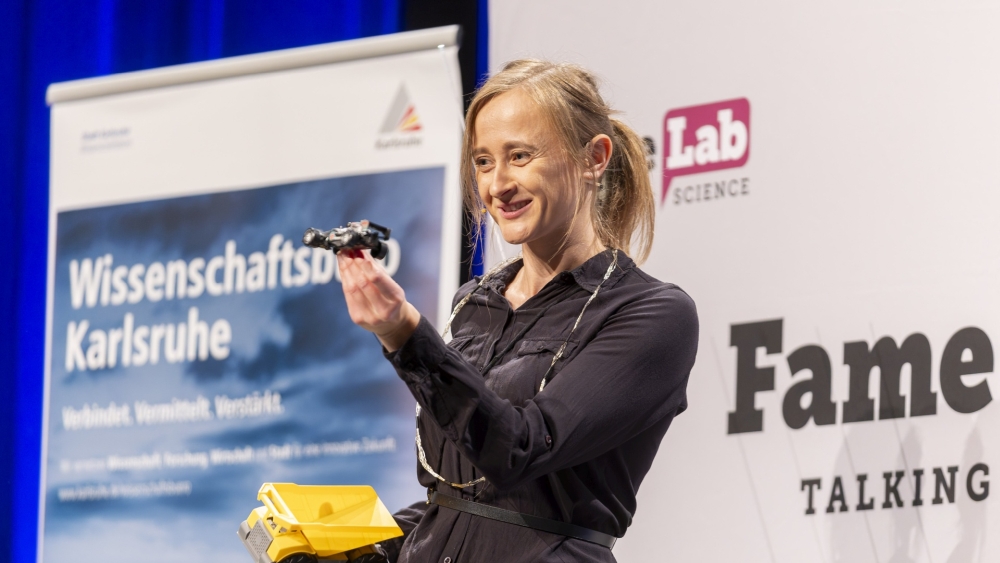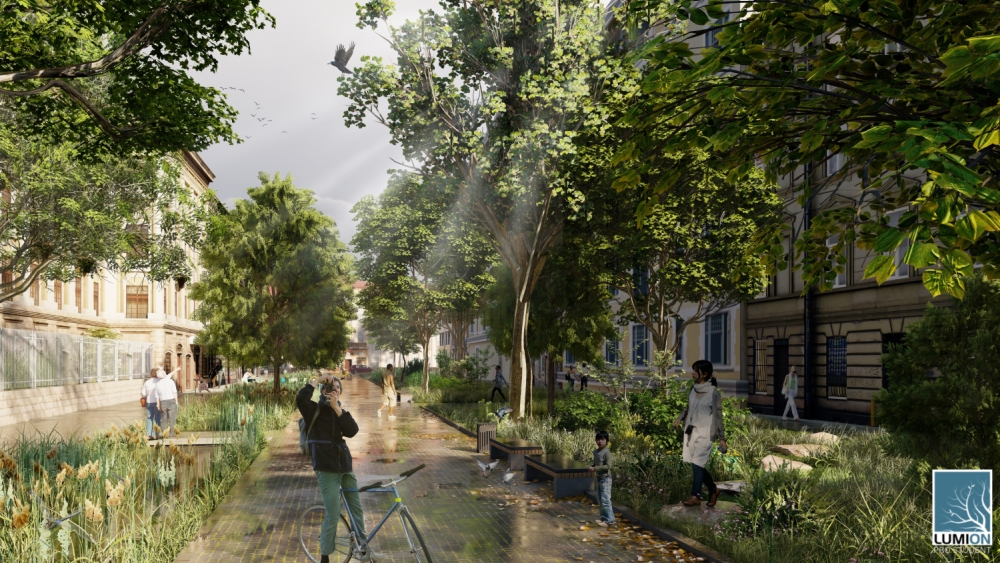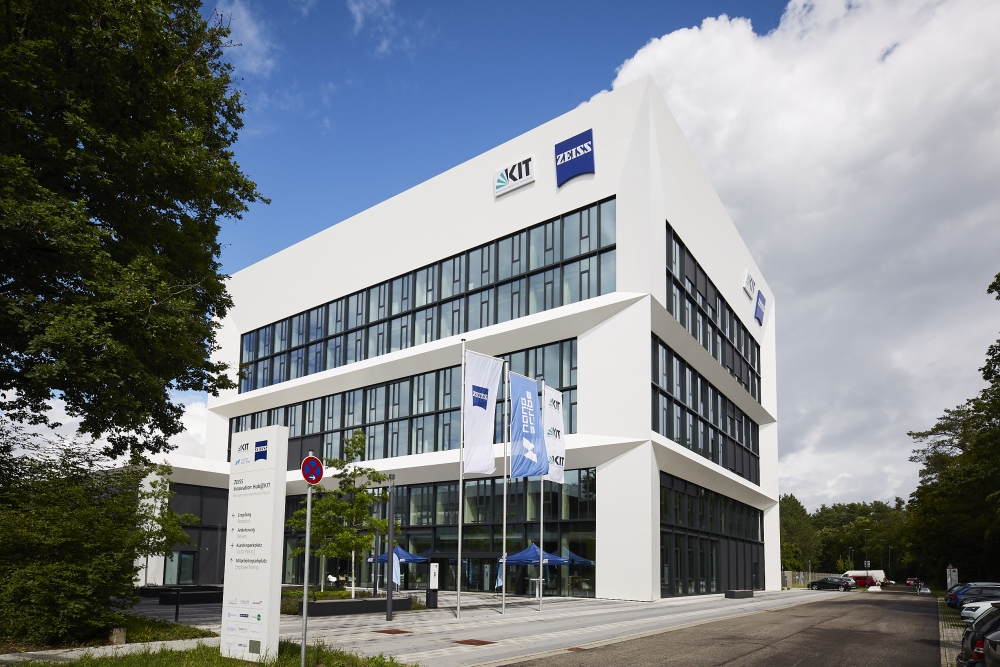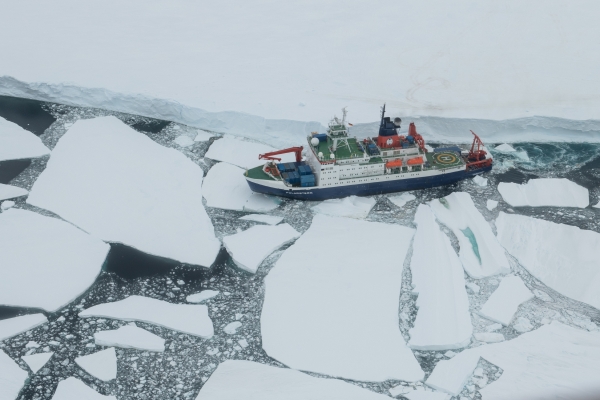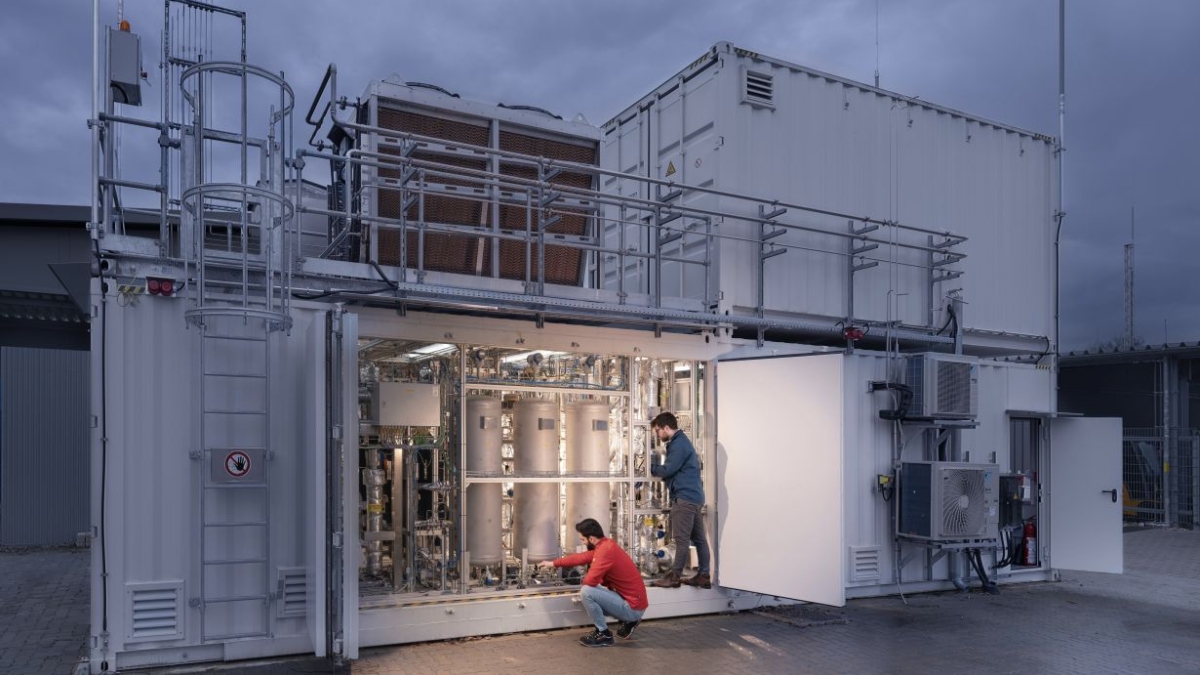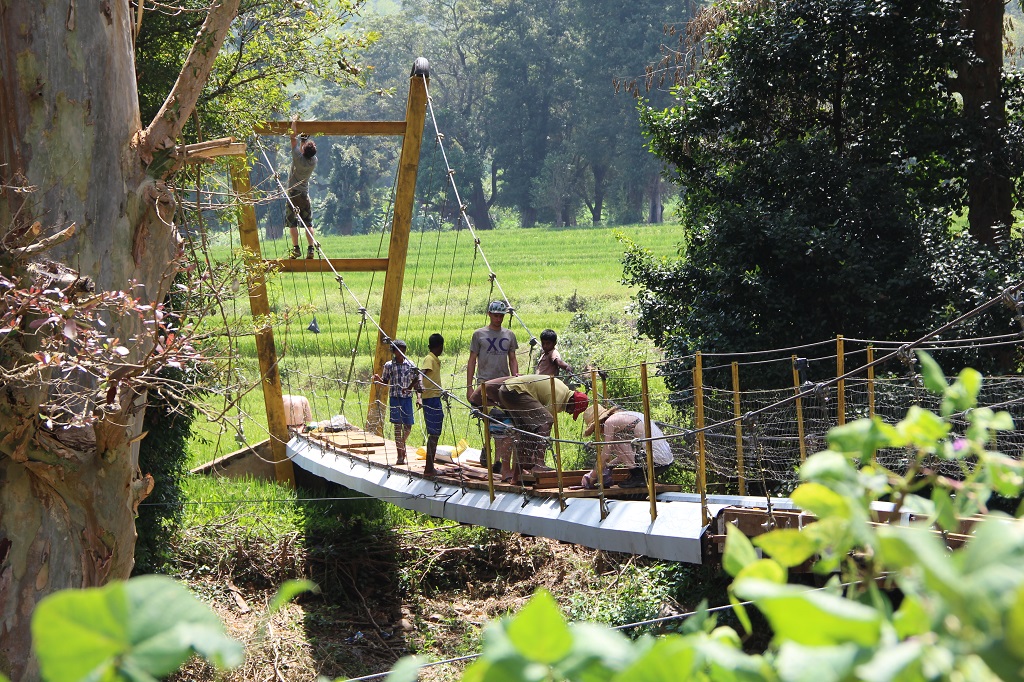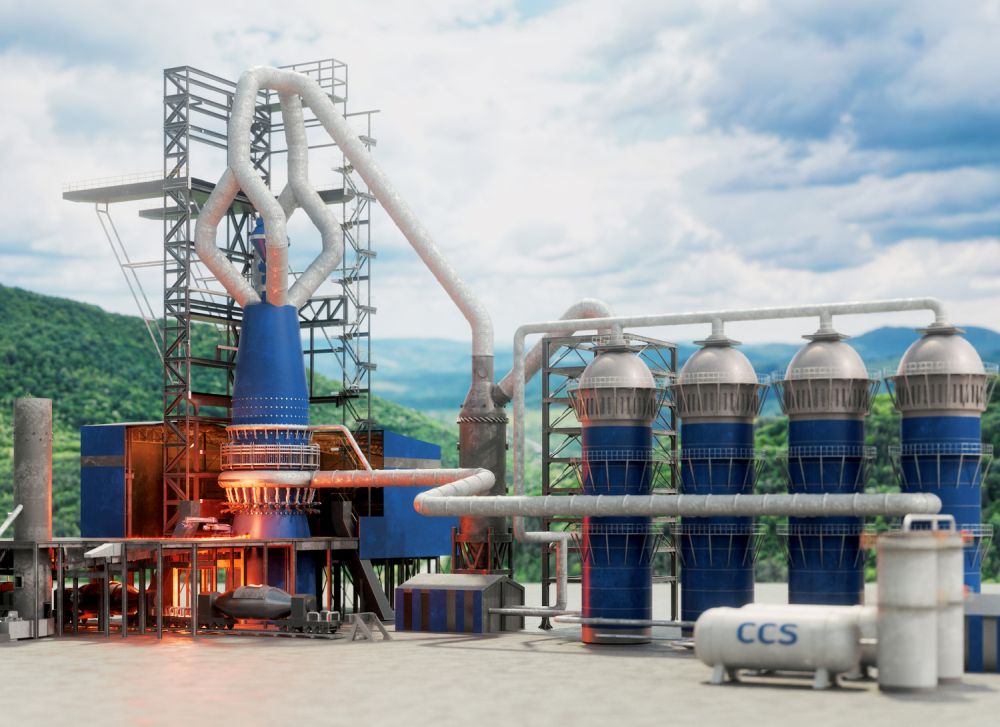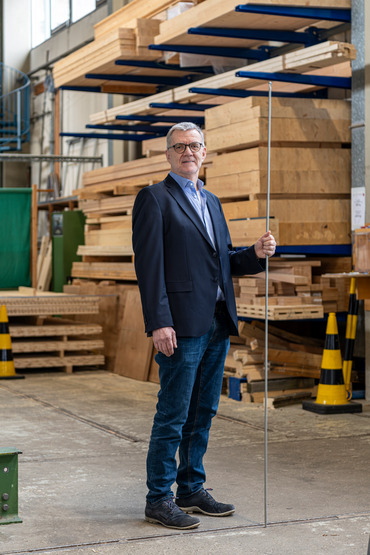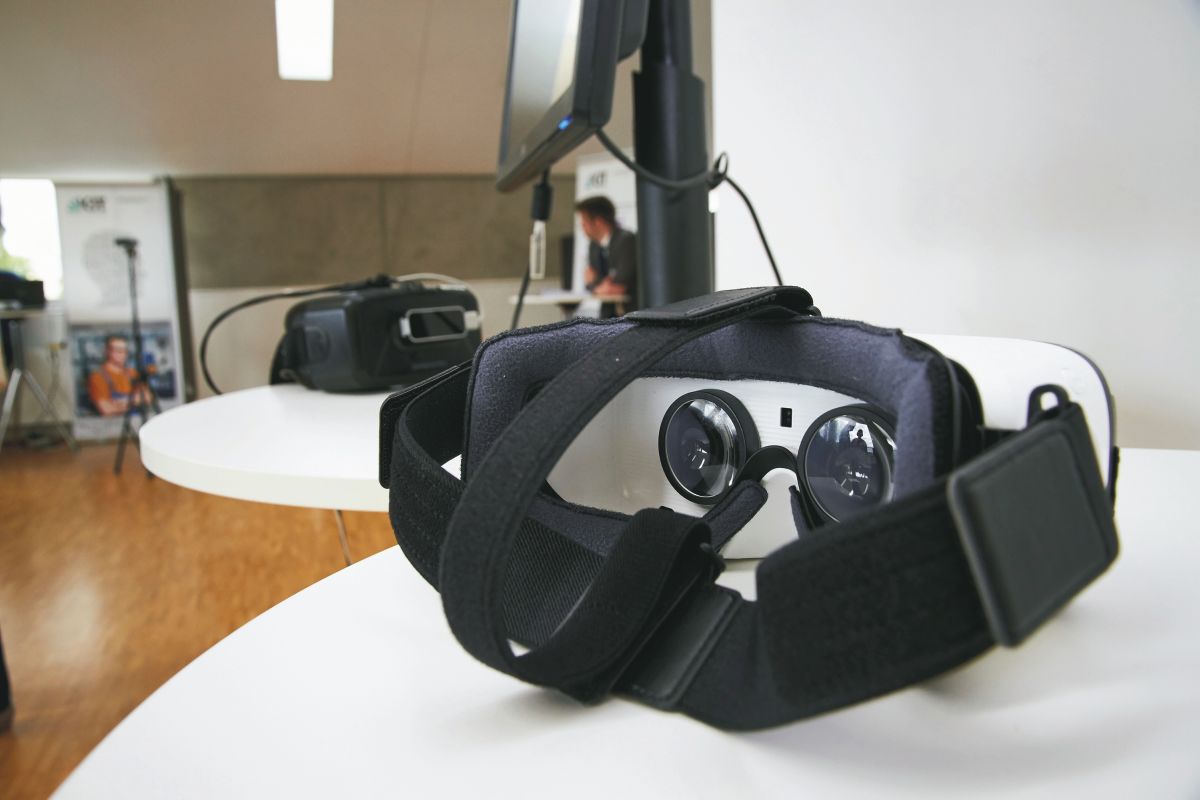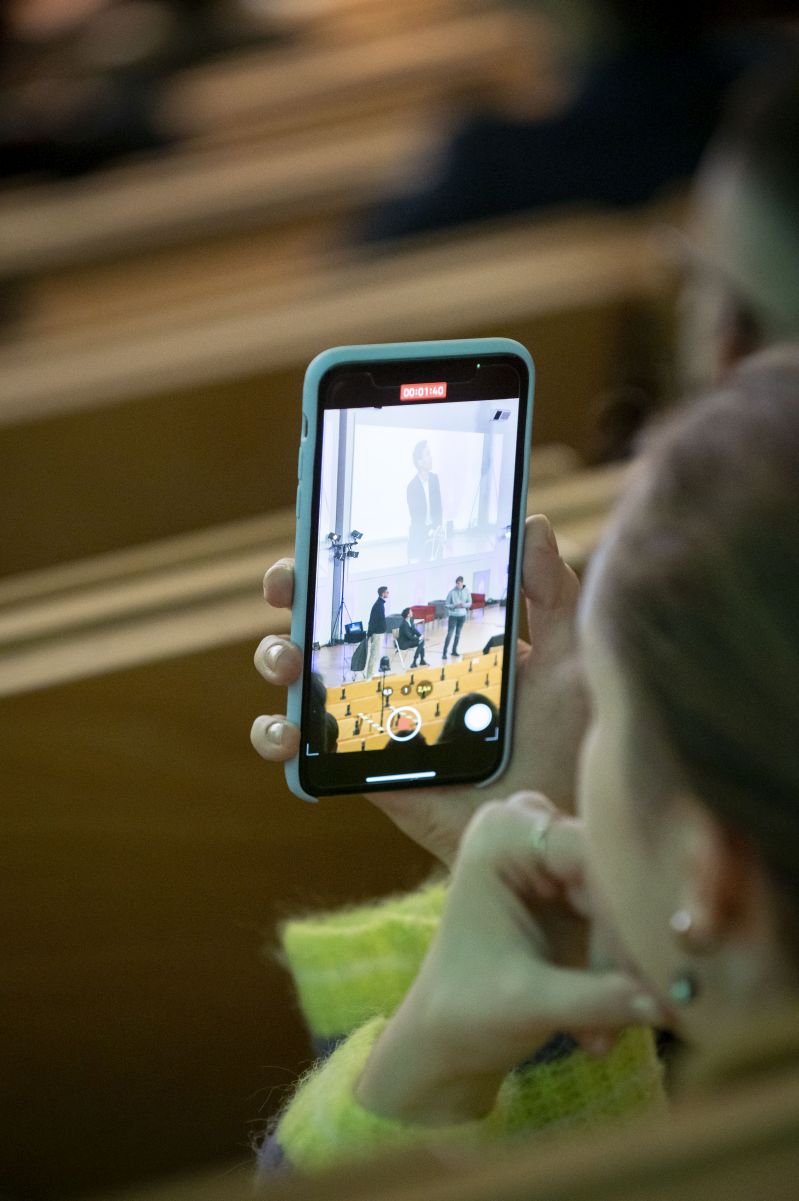Themenhighlight Dezember: Rückblick und Ausblick – die nächsten 200 Jahre
Medizin der Zukunft entsteht jetzt – und das KIT ist mittendrin
2025 geht zu Ende – und damit das 200-jährige Jubiläum des KIT. Doch auch mit 201 Jahren bleibt das KIT am Puls der Zeit! 2026 steht das Wissenschaftsjahr des Bundesministeriums für Forschung, Technologie und Raumfahrt unter dem Motto „Medizin der Zukunft“: ein Kernthema des KIT. Hier tüfteln Forschende unter anderem an Herzklappen aus dem 3D-Drucker, Mini-Organen für Medikamententests und smarten Wearables.
So arbeitet ein Team um die Biochemikerin Professorin Ute Schepers vom Institut für Toxikologie und Genetik des KIT an einer echten Revolution: Herzklappen aus dem 3D-Biodrucker. Der Clou: Sie bestehen aus körpereigenen Zellen. Das Immunsystem akzeptiert sie – und sie wachsen mit. Für Babys mit Fehlbildungen am Herzen ein riesiger Vorteil. Schepers ist überzeugt: „Ersatzteile aus dem 3D-Biodrucker könnten bald Standard sein, bei Herzklappen vielleicht schon in fünf bis zehn Jahren.“ Und das ist erst der Anfang: Mittelfristig sollen ganze Herzen gedruckt werden.
Die Forschung hat noch einen weiteren Nutzen. Mini-Organe aus dem Drucker dienen als Testplattform für neue Medikamente. „So lassen sich Tierversuche vermeiden oder zumindest stark reduzieren“, erklärt Schepers.
Intelligente tragbare Geräte – sogenannte Wearables – sind längst Alltag. Aber das Team um Dr. Tobias Röddiger vom Institut für Telematik des KIT setzt noch einen drauf. Mit OpenEarable 2.0 haben sie eine Open-Source-Plattform für ohrbasierte Sensoren entwickelt. Damit können Entwicklerinnen und Entwickler eigene Anwendungen bauen.
Die „Ohrknöpfe“ messen über 30 physiologische Parameter direkt am Ohr: Herzfrequenz, Atemmuster, Körpertemperatur und sogar Ermüdung. „Wir wollten eine offene und hochpräzise Lösung für die Gesundheitsüberwachung schaffen, die weit über heutige kommerzielle Wearables hinausgeht“, sagt Röddiger.
Das Ohr ist ein echter Hotspot für Daten: Mikrofone erfassen Vibrationen im Schädel, um Essaktivitäten zu erkennen. Bewegungssensoren registrieren Stürze, Biosensoren messen Sauerstoffsättigung und Temperatur. „Viele Signale sind am Ohr viel besser zugänglich als an anderen Körperstellen“, erklärt Röddiger.
Neben Biodruck und intelligenten Wearables geht es am KIT auch um Robotik, Medizintechnik, personalisierte Medizin und digitale Zwillinge. Ein großes Thema: Digital Health – also die Verbindung von Medizin und digitalen Technologien. Die Gesundheitsforschung am KIT zielt darauf ab, Diagnose und Therapie zu verbessern und ein Leben bei guter Gesundheit zu fördern.
Spotlight November: Sharing Knowledge
On Stage for Science!
Explaining complex topics with humor—that’s what science slams are all about. In this format, researchers have just three minutes to present their scientific work to a mostly lay audience in an entertaining and engaging way—whether on a big stage or in a cozy bar.
Maria Paszkiewicz-Idzik, a photonics expert at the Institute for Theoretical Solid-State Physics at KIT, is a big fan of science slams. She made it all the way to the finals of FameLab Germany 2025. Her topic on stage in Bielefeld: how optical transistors can process vastly more data much faster than the electronic ones used in today’s computers. To bring her research to life, Maria lit up an LED garland she wore around her waist, compared electrons to heavy trucks and photons to speedy race cars, and showed examples of optical fibers already in use. “It’s a dream come true to explain what I do to so many people!” she said enthusiastically. “And the best part is the atmosphere backstage—everyone cheers each other on. It’s amazing.”
Jochen Zürn from the Institute for Soil Mechanics and Rock Mechanics at KIT is also passionate about sharing science with the public. At the last FameLab competition in Karlsruhe, he brought a cooler on stage to demonstrate how tunnels can be built more sustainably in frozen ground. For the civil engineering researcher, facing the public is essential: “I spend most of my time with people who do the same work I do. I want to get out of my bubble and learn how to communicate with others in a simple, relatable way.”
Jochen also hopes to build public trust in his field and in science overall: “When we build a tunnel, we’re doing it for everyone—for society as a whole. That’s why even non-experts should be able to understand what we do and why it matters.”
Spotlight October: City of the Future
Green Beats Gray When It Comes to Heat Stress
Karlsruhe is already one of the warmest cities in Germany. By early September 2024, the city had recorded 18 hot days where temperatures hit or exceeded 30°C. In 2022, there were as many as 44 such days. By the end of the century, that number could rise to over 50 hot days per year. And many cities look the same: dominated by concrete and asphalt. These dark, heat-absorbing surfaces trap warmth in the summer, while a lack of greenery means limited shade.
Researchers at the KIT are developing ways to make city streets, parks, and public spaces greener and more livable. Dr. Somidh Saha from KIT’s Institute for Technology Assessment and Systems Analysis (ITAS) has collaborated with landscape architect Arturo Romero Carnicero, urban planner Carolin Thomas, and other scientists from the 'GrüneLunge' research project to visualize what a greener Karlsruhe could look like. Green spaces—especially trees—play a crucial role in improving air quality and regulating the urban microclimate. Trees cool the air during heatwaves and help absorb rainwater during heavy storms, reducing the risk of flooding. The research team recommends planting more drought-tolerant tree species, adding varied ground vegetation, and incorporating small bodies of water throughout the city. According to their findings, increasing tree canopy coverage on streets by at least 30% could cut the impact of extreme heat waves by nearly 64% annually. Plus, denser tree coverage could reduce surface water runoff by 58%. Urban greening isn’t just about making cities look nicer—it significantly boosts resilience to both heat and flooding, especially in densely developed areas.
Spotlight September: Collaboration in Science
A Hotspot for Innovation: The ZEISS Innovation Hub @ KIT
Since 2020, the ZEISS Innovation Hub @ KIT has been a driving force for innovation on Campus North - accelerating the journey from lab breakthroughs to real-world applications in industry and society. The hub offers a dynamic space for KIT start-ups, collaborative research, and valuable networking between emerging start-ups and established industry players. More than 30 partners are currently working alongside ZEISS and KIT to develop the technologies of tomorrow: ranging from miniaturized sensors and advances in the circular economy to robotic surgical systems for microsurgery. Long-standing companies like Nanoscribe, founded at KIT in 2007, benefit from the hub’s close connection to research - as do newer start-ups like Voxalytic and microworks. The hub creates ideal conditions for them to grow their ideas into long-term solutions. Students and graduates of KIT also gain a significant advantage from this scientific and entrepreneurial ecosystem. The hub offers opportunities to collaborate on research projects, find thesis topics, and gain early insights into industrial research.
The spirit of collaboration is tangible - even in smaller initiatives. A great example is the Makerspace, a joint effort between ZEISS and KIT’s Cluster of Excellence “3D Matter Made to Order.” This creative workshop invites high school students, university students, and KIT employees to bring their ideas to life. With expert guidance and access to cutting-edge 3D printers, they can build prototypes - and perhaps even innovations that will shape the future.
Spotlight August: Science and Ethics
Assessing the Consequences Of Upcoming Technologies - 30 Years Of ITAS
Whether in the world of work, mobility, or energy supply, new technologies and digitalization have become an integral part of everyday life. However, progress brings with it not only a better quality of life, but also unexpected or undesirable consequences. The Institute for Technology Assessment and Systems Analysis (ITAS) at KIT has been assessing the impact of new technologies on our everyday lives, the economy, politics, and society since 1995.
Through the Office of Technology Assessment at the German Bundestag (TAB), experts from KIT have also been advising the German Bundestag on technical and scientific progress for over 30 years. The TAB analyzes complex issues – such as artificial intelligence – and prepares them for parliamentary discussion. The aim is to identify the opportunities and risks of new technologies at an early stage and evaluate them based on facts. This enables political decisions to be made in the public interest.
But ITAS also works with local communities. The project “Energy Transformation in Dialogue – From Real-World Laboratory to Karlsruhe Transformation Center” (EDia) brings together ITAS researchers, citizens, and local stakeholders. In workshops and using playful methods, they develop concrete ideas on how Karlsruhe can successfully make the transition to renewable energies.
Spotlight July: Working at KIT
Working at KIT: Where Lab Coats Meet the Great Outdoors
Contrary to popular belief, science doesn't only take place in an ivory tower or behind hermetically sealed laboratory doors. Work at KIT often looks very different. Climate researchers measure the atmosphere and travel to Antarctica to do so. Physicists chase high-energy cosmic rays from space and install huge detector arrays in Argentina for this purpose. KIT also has three permanent observatories at the highest point in Germany – on the Zugspitze. Here, scientists use various optical methods to measure the concentration of trace gases and the composition of clouds and aerosols. Climate researchers at KIT are currently participating in two international measurement campaigns. In order to gain a better understanding of how air exchange processes work in mountainous regions, the experts are collecting extensive climate data in the Alps. This campaign aims to link measurement data from the Alps with large-scale meteorological events, and is known as the TEAMx Observational Campaign (TOC). Another KIT research team is currently tracking thunderstorms in the US. This is the first comprehensive scientific campaign dedicated exclusively to the study of hail in over 40 years. Over the course of six weeks, the scientists will track and analyse hail-producing thunderstorm systems. A key objective is to enhance the prediction of severe hailstorms, particularly in terms of hailstone size and density. The data will also benefit materials research, helping to make buildings and materials more resistant to hailstorms.
Spotlight June: KIT meets Science Year
Clean Ship Fuel from a Sewage Treatment Plant?
A sewage treatment plant? That usually means wastewater and sludge. But the roughly 80,000 treatment plants across Europe have a lot more potential. The Mannheim-based startup ICODOS, a spin-off from the KIT, has partnered with several organizations to build a demonstration facility called “Mannheim 001.” This plant will tap into an overlooked resource for the clean energy transition: climate-neutral methanol.
Methanol is a key chemical used across industries — including shipping, where it’s gaining attention as an alternative fuel. The shipping industry still relies heavily on fossil fuels and is responsible for about 3% of global CO₂ emissions.
At the demonstration site, green methanol is produced using a patented process that combines biogas from wastewater treatment with green hydrogen. This hybrid approach is considered one of the most efficient methods for capturing CO₂. Unlike traditional processes where CO₂ capture and methanol synthesis are separate steps, this integrated method combines them. The result: lower energy use, reduced costs, fewer technical components, and improved system durability and automation.
Thanks to its compact and modular design, the Mannheim001 technology can be installed directly at existing sewage treatment plants. This offers a decentralized, cost-effective, and environmentally friendly solution for producing green methanol on-site.
The project shows how innovation, local infrastructure, and a young startup can come together to create real solutions for climate action. In the future, sewage treatment plants could become key players in the clean energy transition — not just in Mannheim, but around the world.
Spotlight May: Science for Everyone!
For 20 Years: Technology That Connects
Over 20 years ago, a group of students at KIT came together with a shared goal: to use their technical expertise to create sustainable solutions for global challenges by partnering with local communities. Their first collaboration happened in 2003, when students from KIT’s Institute of Hydromechanics helped a community in Sri Lanka secure access to clean water. The devastating tsunami in 2004 strengthened their commitment, leading to the founding of the student group Engineers Without Borders (EWB) Karlsruhe.
The success of their projects relies on open communication with the communities they serve. “Projects only succeed when they truly address the needs of local people,” says Felix Louven, chair of EWB Karlsruhe. Students are engaged in every step of the process—technical planning, fundraising, social outreach, and project coordination.
Today, EWB Karlsruhe includes around 200 members working on nearly 40 projects and plays a major role in student-led development cooperation. Whether it’s providing electricity in the Congo, building schools in Uganda, or constructing bridges in Sri Lanka, their work is always based on collaboration and mutual respect with local partners.
EWB Karlsruhe continues to be driven by its vision of combining engineering know-how with social responsibility. Students are confronted with global challenges and social inequality—experiences that not only shape their personal growth but also contribute meaningfully to society.
Spotlight April: Changing the World – From the Past to the Present for the Future
Producing Steel More Sustainably? Now It’s Possible
The steel industry is one of the most climate-damaging industries in the world, responsible for about eight percent of global CO₂ emissions—more than the total emissions of India, a country with nearly 1.5 billion people.
But a new technology could change that. A team of researchers led by Professor Olaf Deutschmann from the Institute of Technical Chemistry and Polymer Chemistry (ITCP) at KIT, in collaboration with the company Paul Wurth, has developed a process that makes existing blast furnaces significantly more environmentally friendly. The potential impact is enormous: worldwide, this innovation could save hundreds of millions of tons of CO₂ every year.
How does it work? The key lies in rethinking how waste gases from the two most critical units in a steel mill are mixed. The coking plant produces large amounts of methane as coal is burned to make coke, while the blast furnace releases CO₂ when smelting iron ore into pig iron. The researchers developed a modified gas mixer, (Cowper) which enables methane and CO₂ to react chemically, forming synthesis gas (syngas). This syngas can then be injected into the blast furnace as fuel, significantly reducing the need for environmentally harmful coke.
A pilot project has been running in Dillingen since 2021, and the technology has since been further optimized under the name EASyMelt. According to Paul Wurth, this innovation could reduce CO₂ emissions by up to 50 percent in a conventional plant. One of the world’s largest steel companies, Tata Steel in India, has already implemented the method in one of its blast furnaces.
Deutschmann is enthusiastic: "Steel remains indispensable, but pragmatic solutions like this can quickly make production more climate-friendly. We don’t have time to wait— we have to cut CO₂ emissions now if we want to slow climate change."
Spotlight March: Spin-offs and Transfer
A screw redefines timber construction
"Why are there no long screws for timber construction?" asked Professor Hans Joachim Blaß some 20 years ago. “Short screws had been around for more than 150 years, but none from 60 centimeters to more than a meter in length," Blaß recalls. "We wanted to know if timber connections with such long screws could withstand high tensile and compressive loads. The industry was not convinced and told us at the time that there was no market for it.” Eventually, Blaß and his team found an industrial partner that provided the long screws they needed for testing.
Countless technical and scientific experiments followed - and indeed, depending on the angle at which the screws were screwed into the wood, they were able to strongly reinforce the components. This effect occurred both when the wooden elements were under compression and when they were under tension.
This innovation revolutionized the industry and paved the way for the global timber construction boom. Much larger timber structures, even skyscrapers and bridges, could be built while saving timber.
In 2010, Blaß was awarded the Marcus Wallenberg Prize - the "Nobel Prize" of the forestry and timber industry - by the Swedish King Carl Gustaf in Stockholm for his groundbreaking work. And the market has proven Blaß right: "Within 20 years, long screws have gone from being an absolute niche product to being by far the most important wood fastener," he reports.
Spotlight February: Women in Science
With VR Glasses and a Wheelchair to the Beach
How about a trip to the beach? For people without disabilities, it's usually just a matter of finding the time. But for those with limited mobility, it's far more complicated due to the lack of accessible pathways to the water. And it’s not just the real sea that poses a challenge — even virtual worlds can be difficult for people with disabilities to access. This is where the research of Kathrin Gerling, professor of human-machine interaction and accessibility and co-head of the Real-World Laboratory “Accessibility” at the Institute for Anthropomatics and Robotics (IAR) at KIT, comes in. A keen gamer herself, she wants to make virtual reality inclusive for people with disabilities, enabling experiences like a calming virtual trip to the beach.
It may be surprising, but virtual reality often isn't designed with accessibility in mind. “Hardware and game design rarely offer an immersive experience for everyone,” Gerling explains. Those who rely on wheelchairs or walking aids face obstacles – for instance, joysticks that tie up their hands. Her team is developing interactive systems that work with devices like gloves.
Gerling’s passion for this research stems from a simple truth: much of what’s designed for people with disabilities is purely functional. “But joy is just as important,” says the interaction expert, who in 2023 acquired one of the prestigious EU ERC Starting Grants for her research. “Immersing in barrier-free virtual worlds for sports, games, or leisure is a matter of justice.”
Spotlight January: 200 Years of KIT
No Smartphone Without Otto Lehmann
Solid, liquid, gas—every child learns these three states of matter in elementary school. But physicist Otto Lehmann discovered there could be a fourth state, something in between solid and liquid. January 13, 2025, marks the 170th anniversary of his birth.
Today, Otto Lehmann's pioneering research lives on in tablets and smartphones. As a professor of physics at the Technical University of Karlsruhe, he designed a groundbreaking microscope equipped with its own light source and a gas supply to heat the specimen stage. This innovative tool allowed him to closely observe the melting and crystallization behaviors of various chemical substances. Through these observations, he identified phases that exhibited properties of both liquids and crystals.
In 1904, Lehmann published his groundbreaking findings in his book Liquid Crystals. Although his work was initially mocked by his peers, scientific interest in liquid crystals resurged in the second half of the 20th century. By 1971, the first liquid crystal displays (LCDs) had been developed, cementing Lehmann's legacy in modern technology.



